
Casting of the 150th Anniversary Bell
By Sister Lawrence Mary
Little Sisters of the Poor Board member, John Danko, is president of Danko Arlington which was started 99 years ago by John’s great-grandfather. The company, a foundry, makes military and commercial aluminum and bronze sand castings. John proposed to cast a bronze bell in honor of the 150th anniversary of the arrival of the Little Sisters in Baltimore.
On Tuesday, May 7, Little Sisters and Residents joined Board members at the Foundry in northwest Baltimore. John showed slides on the process of casting metal and different projects the Foundry had accomplished.
During this time, the bronze to be used for the bell was being melted and purified in a huge furnace. When it reached the required temperature of 2,000 degrees Fahrenheit, we were escorted to the building where casting is done. Those of us who did not wear glasses were given safety goggles to wear. To say that this building was warm is an understatement! John mentioned that he often thinks of the three young men who were cast into the fiery furnace in the Old Testament! We were separated from the furnace by the floor covered with thick layers of sand. On this sand was a square mold made out of sand. There were two short raised tubes coming out of the top of the mold, one where the metal would be poured, the other for overflow. We watched as the two men who were going to cast the bell donned heavy garments. They then guided a type of crane with metal “arms” which reached into the furnace and withdrew a large stone bucket. This bucket glowed red and orange throughout because of the heat. Inside was a metal container with the molten bronze. Immediately they turned it so that it flowed into the sand molds. There were smaller molds for the clapper for the bell and three keys for the Stone House in Emmittsburg where St. Elizabeth Ann Seton had first lived when she moved to Emmittsburg. John explained that the molten bronze which splashed onto the sand during the pouring would be picked up later and used for other projects.
After the metal was poured, John said it could take up to 24 hours to solidify enough to break the molds and to ascertain that the lettering on the bell was perfect. He showed us around other parts of the foundry. The company purchased the 3-D Sand Printer last year from Germany and it is the first of its kind in the USA. It is a large machine which functions similar to a computer printer. Fine, pure sand from Wisconsin flows into it from one side and the hot glue flows in from the other side. The two mix, and layer by layer form the mold. John gave us a small statue of Jesus which one of the men had made in the printer. Jesus has his thumbs up as if to say “well done.” Unfortunately, the souvenir will only last a few months before it crumbles, but in the meantime it reminds us of John’s generosity! We also saw a 3-D plastic printer which functions in the same way using liquid plastic. This was used to do the plates with the 150th logo and the words of St. Jeanne Jugan which are on the bell.
Just as we were finishing our “tour,” an employee informed John that the bell was at the stage where the mold could be broken. Pieces of the sand mold were scattered on the floor and we caught our first glimpse of the bell. John inspected it carefully and was pleased that the logo and the lettering were perfect. It measures about 18” by 18” and weighs 50 pounds. On one side is the Logo for the 150th anniversary, Little Sisters of the Poor Baltimore 1869 – 2019. On the other, there is the saying of St. Jeanne Jugan about when you are tired and don’t know what to do, do not worry but to go to the chapel and tell Jesus.
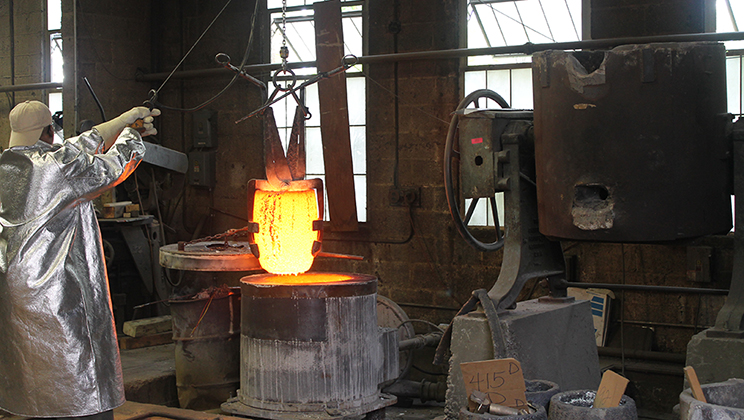
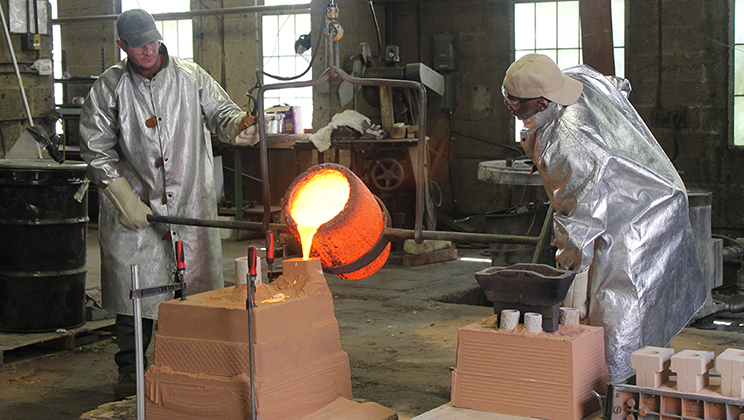
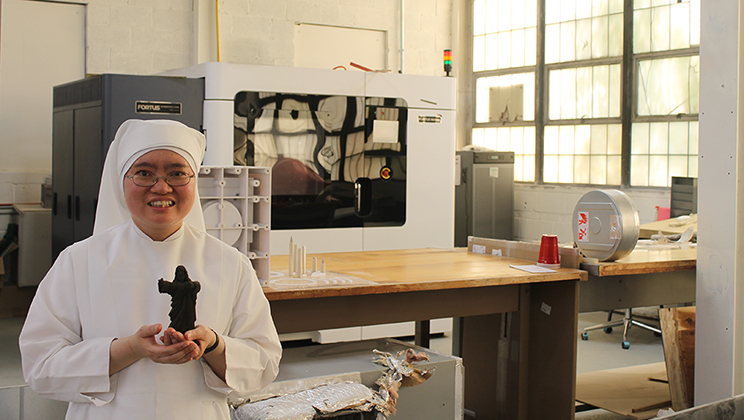
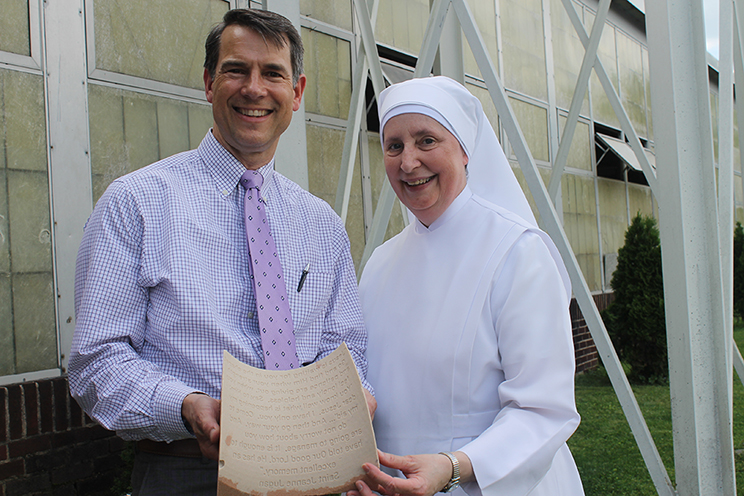
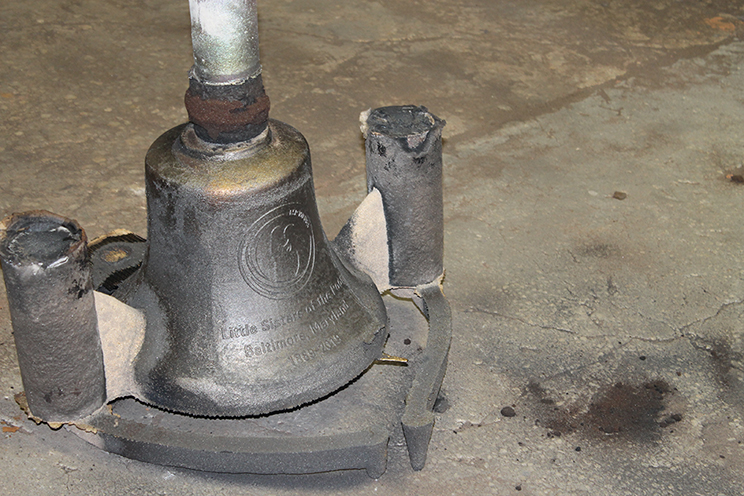
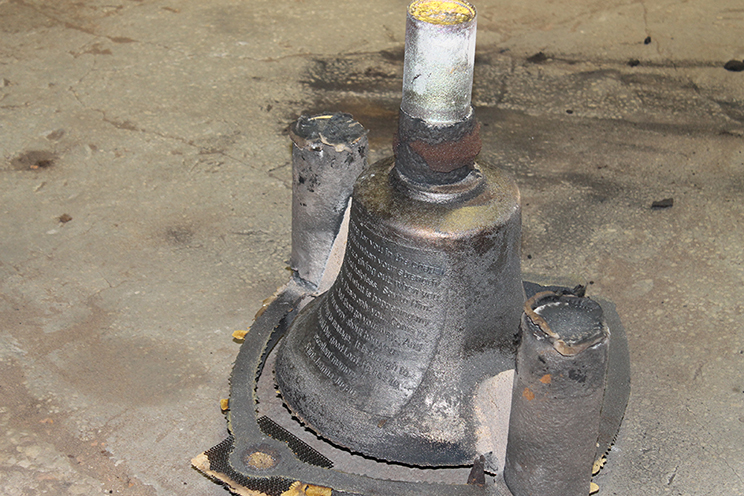
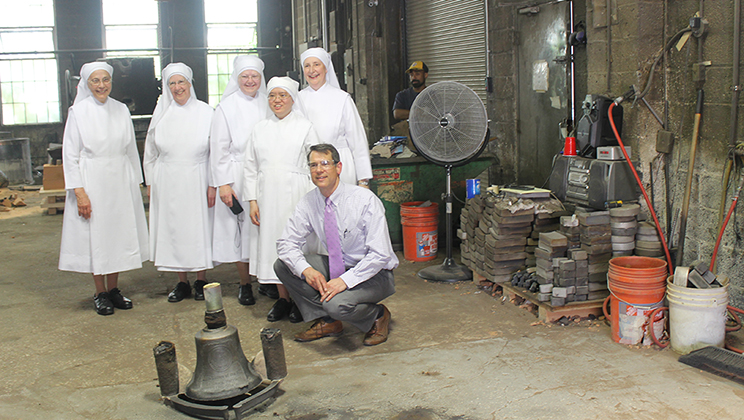

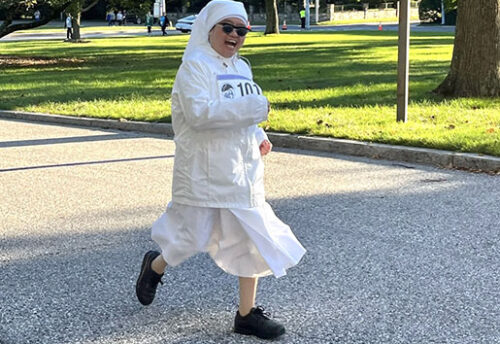
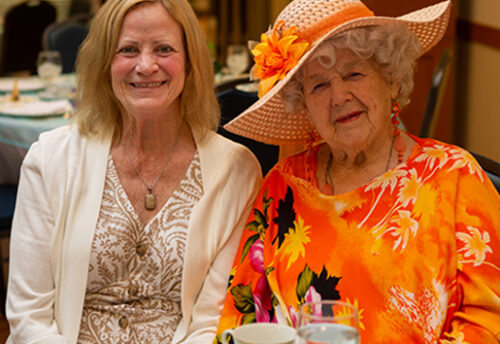

Casting of the 150th Anniversary Bell